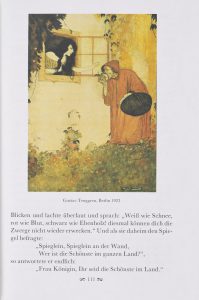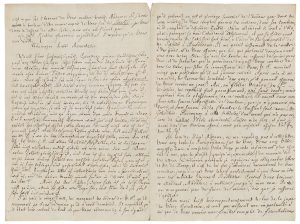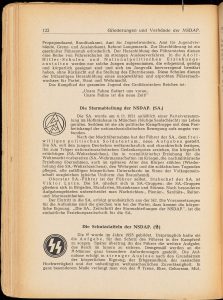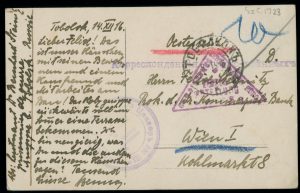October 11, 2019, by Kathryn Steenson
Meet our German manuscripts and Special Collections
Have you ever wondered what DIY books were available to borrow from an East German public library? Is the distribution of pigs in 1930s Germany a persistent niggling gap in your knowledge? Do you worry that when the 18th century dispute between the Houses of Hesse-Homburg and Hesse-Darmstadt comes up in casual conversation, you won’t be able to follow?
In all honesty, probably not, and unless you’re one of the 9% of UK population who can understand German, you might struggle to find the answers lying within our extensive collections of German language materials. We have several large archive collections and many thousands of rare books in German, including around half the stock of Magdeburg Public Library at the time of its closure in 1992. It was acquired through the efforts of the University’s now-defunct Institute of German, Austrian and Swiss Affairs, which focussed on the politics and society of Germany rather than the language and literature. The Magdeburg Collection represents a typical East German library in the last years of the German Democratic Republic (GDR) and we have virtually all the literature; subject areas where it was considered that the East German viewpoint would be interesting; and subjects where there was an interestingly large quantity of stock, such as history, child psychology, do-it-yourself, and car maintenance.

Image of Snow White taken from ‘Hundert Illustrationen aus zwei Jahrhunderten zu Märchen der Brüder Grimm’ (1985, Magdeburg Collection). It was used in our 2018 exhibition ‘From Rags to Witches’.
The aristocratic in-fighting is played out in the collection BK: Papers of the Bentinck family, Counts of the Holy Roman Empire, largely concerning their estate at Doorwerth, The Netherlands. William, 1st Count Bentinck, was the Earl of Portland’s son and inherited his father’s Dutch estates. In 1733 he married Countess Charlotte Sophie von Aldenburg, but within a few years the couple separated. The resulting bitter dispute over ownership of lands, debts and titles rumbled on for two generations. Countess Charlotte Sophie eventually settled in Hamburg. She was not allowed to see her sons, and they both died before she could meet them again. Eventually the estates and accompanying archive passed to her grandson Vice-Admiral William Bentinck of Terrington St Clement, which is how papers written in German about a Dutch estate came to be at a British University.

Letter in French and German from Luise Gottsched, Leipzig, to Charlotte Sophie, Countess Bentinck; 1755. Ref: BK 4/12/3/2
It would be remiss of us not to mention the war(s) and the wealth of material we have from the early 20th century. We have a number of books and periodicals published in Germany and Austria between 1933 and 1945, including school textbooks published in the Third Reich that glorify war (the maths problems involve arms production calculations, for example) and the ideals of the Nazi party. One of the largest archival collections is the personal papers of Dr Bernard and Mrs Irene Steinitz. Bernard Steinitz left his job teaching in Vienna to join the army at the outbreak of war in 1914. In 1915 he was captured on the Eastern Front and spent the next five years in Prisoner of War camps in Russia. Dr Steinitz returned to Vienna until the Anschluss in 1938, when his religious and political convictions brought him into conflict with the Nazi party and he and his immediate family decided to emigrate. The collection consists primarily of correspondence in German between Dr and Mrs Steinitz and a wide range of friends, family and associates. Dr Steinitz’s interests, writings and beliefs are very well documented in his diaries, which are complete from the 1890s, and correspondence, which begins during the First World War.

Page from ‘Reichskunde für junge Deutsche’ (1943) describing the SA and SS, the Nazi paramilitary branches.

Postcard in German from Bernard Steinitz to Felix Steinitz, written from Tobolsk Prisoner of War camp in Russia, 1916. Ref: Sz C 1723
And the pigs? That comes from ‘Die ostdeutsche Wirtschaft’ (‘The East German Economy’, as in the east of the country, not the postwar German Democratic Republic often called East Germany), which is part of the BMGB, the Collections of the British Military Government in Berlin. It’s part of their library collection of books relating to German politics, economics, history etc, dating from 1901 to the 1940s that the staff kept for reference, but it also includes numerous reports of the British Intelligence Objectives Sub-Committee dating from World War II and the immediate post-war period, and the archive of newspaper cuttings collected by the British Military Government in Berlin during 1946-1981. The material, which was taken from German language publications, includes over half a million cuttings, ranging from brief snippets to detailed articles about the political and economic affairs of the country, social policy, law and the administration of justice, education, arts and science, culture, and religious matters.

from Die ostdeutsche Wirtschaft : eine wirtschaftsgeographische Untersuchung über die natürlichen Grundlagen des deutschen Ostens und seine Stellung in der gesamtdeutschen Wirtschaft (1930, BMGB Collection)
The BMGB collection is the focus of a major project in December: we are closing for a week to clean and repackage the fragile newsclippings into more suitable archival packaging, and then relocate them in the Store. This means the Reading Room will be closed from the 16th-20th December to allow all staff to get hands-on. However, when we re-open after Christmas, you will be able to view these and any other collections in the Reading Room on King’s Meadow Campus. For more information about the German language collections, why not pick up one of our new leaflets or email us? All of our holdings can be searched in NuSearch, and for more general information about what collections we have, follow us on Twitter @mssUniNott and read our newsletter Discover.
No comments yet, fill out a comment to be the first


Leave a Reply